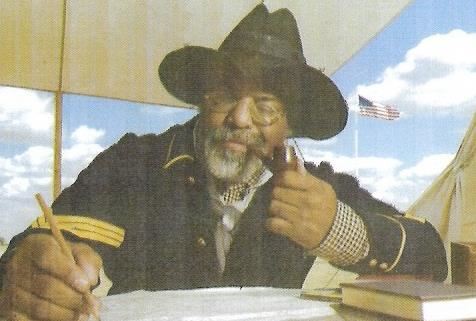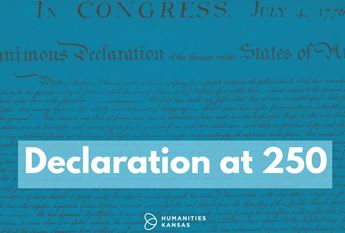

Buffalo Soldiers in the Heart of America
February 15, 2021
In the early hours of New Year’s Day 1869, several men from the all-Black 10th Cavalry laughed and joked while waiting for their white counterparts to finish at the lone pool table in Sutler’s store in Fort Larned, Kansas. Spirits were high as the men celebrated the new year. The mood soon turned sour, however, because the white soldiers refused to give up the pool table.
Conflicting stories existed about what happened next. While fights were not unusual when men drank and celebrated together, this particular altercation had significant ramifications. The men of the all-white infantry claimed that one of the men of the all-Black 10th Cavalry (known today as Buffalo Soldiers) pulled a gun on a white officer—a severe infraction.
In response, the head of the post punished the entire 10th Calvary (rather than the single man accused) with guarding the post woodpile all night long—in the middle of a blizzard. Even Fort Larned’s doctor protested the action to no avail. The woodpile was normally guarded by a single soldier, not an entire company, and not in such extreme weather.
The incident reveals that life on the frontier was not immune to the racial tensions of the day. The Rice County Historical Society aims to place this racial inequality at the center of a new exhibit in the Coronado Quivira Museum about Buffalo Soldiers on the Santa Fe Trail with an HK Humanities for All grant as part of the 200th anniversary of the trail. The exhibit opened in February 2021.
Charlene Akers, director of the Coronado Quivira Museum which is part of the Rice County Historical Society, stated that the exhibit will focus on the relationships of commanders and enlisted men and promote diversity.
The New Year’s Day incident did not end with the punishment of guarding the woodpile, however. Racial tensions remained high and the following day, while the Buffalo soldiers were on patrol, the stables of the 10th Cavalry burned to the ground under suspicious circumstances. The Buffalo Soldiers lost several horses and all of their equipment. To make matters worse, they were accused of setting the fire despite being nowhere near the fort when it started.
Captain Nolan (who was white), head of the 10th Cavalry, protested the innocence of his men and meticulously laid out charge after charge of prejudice and bigotry by the white men stationed at the fort.
Tensions became so high that the 10th cavalry was soon transferred away from Fort Larned.
The Buffalo Soldiers, however, proved their worth time and time again. In letters to his superiors, Captain Nolan praised the men. He outlined how they executed work details, guard duty, cared for their horses, performed cavalry duties, patrolled the surrounding area, and served as escorts to merchants and travelers between Forts Larned and Dodge. “All these duties were faithfully performed and to the lasting satisfaction of all concerned,” stated Nolan.
The legacy of the Buffalo Soldiers is complex, as is that of all those who served on the frontier.
Join the Movement of Ideas by attending the Buffalo Soldiers Protecting the Santa Fe Trail exhibit at the Coronado Quivira Museum.



